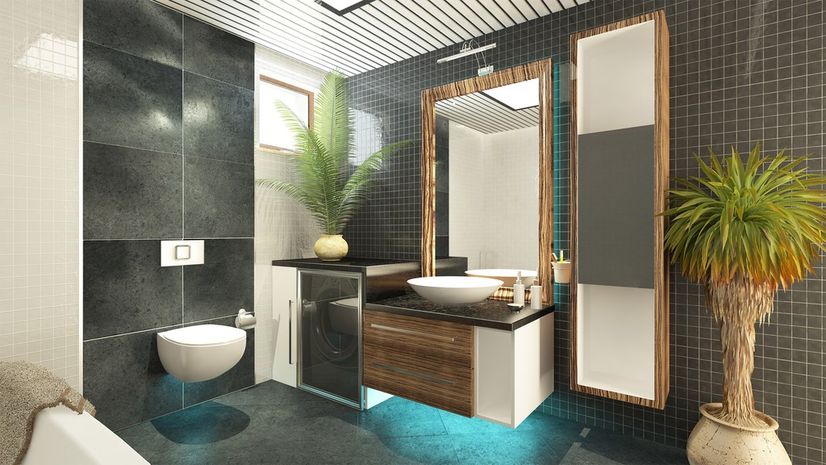After the kitchen, it’s your bathroom that needs considerable attention. The size of the bathroom should never limit the quality of the design. You need to keep in mind a few key considerations about dimensions and fixture sizes before installing the ceiling in the bathroom. Ceiling tiles sizes also matter a lot. Even if you have a compact space as your bathroom, you can still create a delightful and unique room with inspiring ideas.
Before the installation of the ceiling, you need to choose the best ceiling material that goes with the layout, is cost-effective, and is durable. According to National Kitchen and Bath Association, the minimum recommended height of the bathroom ceiling is 80 inches. But still, this height is not enough to prevent frequent water splashes.
Additionally, the bathroom ceiling goes through heat and a lot of moisture. That’s why before ceiling installation, you need to consider bathroom ceiling material. Choose the material that could resist heat and moisture. In the market, several ceiling materials are available for a bathroom ceiling that make the selection overwhelming. Here we have different bathroom ceiling materials that you need to consider before installing a ceiling in your bathroom.Also keep in mind the door that accompanies the bathroom, such as aluminium doors, as that will affect the aesthetic of the place.
Green Board and Drywall
Above the tub areas and non-shower areas of your bathroom, you can install regular drywall. However, the ceiling above the shower area should be moisture resistant. That’s why for that area choose a green board or moisture-resistant drywall. Green board usually comes with face paper that is green in color and offers extra moisture prevention and protects the ceiling from water damage.
Although, the green board is expensive than drywall but the finishing of both material cost same. If you choose drywall then make sure you cover the drywall with a layer of paint.
Cement Board Material
Cement board is another ceiling material that is perfect for your bathroom ceiling. Cover the wet segments before installing ceiling tiles. A cement board is usually used as a backer material. Due to its properties, it will prevent damage due to moisture.
It would be difficult to install cement board by yourself so it is recommended to hire professionals for this work. For additional protection, you use a moisture barrier to cover the frame behind the board.
Tiles as Ceiling Material
Another popular option for bathroom ceilings is tiling. Most homeowners prefer tiling over other ceiling materials. There are many benefits of using tiles as ceilings. Ceiling tiles are affordable, easy to install and appear aesthetic. Moreover, tiles provide great water resistance. But an important point you need to consider is that ceiling tiles are waterproof, and every joint is properly sealed.
You get a number of options when it comes to tiles material. You can choose from marble, ceramic, granite, and porcelain. Whatever material you choose, ensure a water-resistant and strong base behind the ceiling tiles. You can also use plaster over the tiles to prevent water seepage.
Acrylic Ceiling Material
Acrylic is a fiber material that is popular among homeowners for bathroom ceilings. You can get acrylic ceiling material in a wide range of thicknesses, sizes, designs, and shades. You need to keep in mind your bathroom design before choosing the acrylic ceiling material. You can choose solid colors, transparent or patterned colors that go with your bathroom design. Support the acrylic sheets with L-shaped aluminum sheets.
You can hang panel lights or LED lights from your transparent acrylic ceiling to give a striking look to your entire bathroom. You can easily install them or remove them during maintenance work.
Aluminum Composite Panels
Aluminum composite panels have a thermoplastic polythene core. This polythene core is held by two aluminum sheets. These aluminum composite panels are smooth, lightweight, flat, and strong sheets that are best for bathroom ceilings.
You can get these panels in marble, plain, and metallic textures. These panels are available in different sizes and are perfect for your bathroom if it is prone to dampness.


